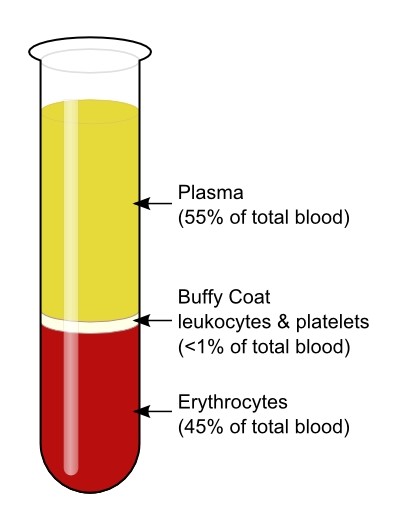
Establishing the Utility of HemoVoid™ and HemogloBind™ as Enrichment Tools for Proteomic Analysis of Red Cells and Whole Blood in Parkinson’s Disease
Background
The complex etiology of Parkinson’s disease (PD) is only poorly understood. However, growing evidence now suggests that neurodegeneration in PD is not restricted to dopaminergic neurons in the brain. Rather, PD may be a systemic disease, involving peripheral tissues and may include oxidative, metabolic, or inflammatory processes. So blood based biomarkers may prove useful in early detection of PD as well as to assess the progression of disease in response to medical interventions.
Challenge
 a-Synuclein (Gene:
SNCA, a-Syn) is a major protein constituent of Lewy pathology in the central nervous system (CNS); the pathological hallmark of PD. Consequently, a-Syn in blood is under investigation as a biomarker for PD, the vast majority of which in circulation, comes from red blood cells (RBCs), by far the most abundant cell type found in blood. Lacking a nucleus, RBCs might serve as important reservoirs for biomarker research as, they are unable to synthesize new proteins in response to outside stimuli. Thus, any changes in the RBC proteome content or structure due to disease, should be measureable once a baseline of normal/healthy controls is established. However, there have been limited biomarker discovery programs conducted on RBCs because of their large dynamic range of proteins, high abundance of lipids, and most especially the super-abundance of hemoglobin, accounting for >95% of the RBC protein mass. Hemoglobin thus presents a major interfering factor in proteomic analyses of whole blood and sedimented erythrocytes.
a-Synuclein (Gene:
SNCA, a-Syn) is a major protein constituent of Lewy pathology in the central nervous system (CNS); the pathological hallmark of PD. Consequently, a-Syn in blood is under investigation as a biomarker for PD, the vast majority of which in circulation, comes from red blood cells (RBCs), by far the most abundant cell type found in blood. Lacking a nucleus, RBCs might serve as important reservoirs for biomarker research as, they are unable to synthesize new proteins in response to outside stimuli. Thus, any changes in the RBC proteome content or structure due to disease, should be measureable once a baseline of normal/healthy controls is established. However, there have been limited biomarker discovery programs conducted on RBCs because of their large dynamic range of proteins, high abundance of lipids, and most especially the super-abundance of hemoglobin, accounting for >95% of the RBC protein mass. Hemoglobin thus presents a major interfering factor in proteomic analyses of whole blood and sedimented erythrocytes.
Solution
As one of the key BSG Advantages,
Enrichment/Depletion, BSG offers a choice of two strategies for proteome enrichment, to get the best results: either selectively binding high abundance proteins (the “Bind” products), or choosing not to bind (the “Void” products) thereby enriching the underlying proteome. To achieve this complementary product line, we first developed a chemical library of general non-specific adsorbents, or stated another way - beads with weak affinity or imperfect fit interactions. Without the use of antibodies, progressive displacement at or near saturation, allows the beads to bias for or against certain proteins. So each bead product was empirically characterized to meet the needs of the application.
HemoVoid™, is designed to remove hemoglobin from erythrocyte lysates in a simple and efficient manner, through a negative selection strategy, meaning the Hemoglobin voids out through the beads, and the vast majority of the remaining proteome binds to the beads. For subsequent analysis, the bead-bound enriched proteome can either be eluted, or for LC-MS/MS, digested on-bead. This latter process is called Bead-assisted Sample Prep or BASP™.
HemogloBind™, binds hemoglobin, with a high degree of selectivity that does not cross-react with most other serum components. It is available as either a suspension reagent product or in a dry powder NuGel™-based format. In the former, HemogloBind™ is supplied in a bottle and aliquoted at suitable v/v ratios depending upon the Hemoglobin concentration. In the NuGel™ powder format, the powder is first weighed and dispensed into SpinX filters according to use guidelines supplied with the product.
The Outcomes
Three reports describe the utility of BSG’s Hemoglobin Removal products to study potential biomarkers for Parkinson’s Disease in Blood
1) Klatt, Stephan, et al. "
Optimizing red blood cell protein extraction for biomarker quantitation with mass spectrometry." Analytical and Bioanalytical Chemistry (2020): 1-14.
The article describes the advantage of HemoVoid™ in detection of low abundance proteins when comparing their amounts (in percent) between four alternative extraction conditions, stating “… Most peptides, following HemoVoid™ extraction, showed ion abundances ranging between 1.00E+5 and 1.00E+6 (31%). In comparison to this, fewer peptides (10–23%) were within this range following extraction with all other protocols”. With respect to potential biomarkers for Parkinson’s Disease, the article states “For example, PRDX6 accounts for 0.4% of the total ion abundance after DOC (deoxycholate) extraction, whereas following HV (HemoVoid™) extraction, this increases to 8%, a 20-fold enrichment”. The authors conclude that the HemoVoid™ method significantly reduces the concentration of hemoglobin, resulting in an increased signal-to noise of the remaining red cell proteins. The article describes methods to digest the HemoVoid™ bead-bound proteome, greatly simplifying the workflow for LC-MS/MS analysis.
2) Elhadi, Suaad Abd, et al. "
α‐Synuclein in blood cells differentiates Parkinson’s disease from healthy controls." Annals of Clinical and Translational Neurology.
The goal of this study was to determine whether blood cells expressing α-Synuclein can differentiate Parkinson’s disease (PD) from healthy controls. Two proteoforms - PSer129 a-Syn (phosphorylated pathological form in Lewy bodies) and Oxidized a-Syn levels are observed in blood cells, but both at considerably lower concentration than total a-Syn, so the extremely high abundance of hemoglobin interferes with their analysis. To compensate, the article states for PSer129 α -Syn & Oxidized α -Syn detection by immunoassay, “followed from hemoglobin clearance with HemoVoid kit (Biotech Support Group LLC, NJ, US)”.
3) Lahut, Suna, et al. "Blood RNA biomarkers in prodromal PARK4 and REM sleep behavior disorder show role of complexin-1 loss for risk of Parkinson's disease." Disease Models & Mechanisms (2017): dmm-028035.
http://dmm.biologists.org/lookup/doi/10.1242/dmm.028035
In this study, the authors studied blood samples from a large pedigree with SNCA gene duplication (PARK4 mutation), to identify effects of SNCA gain-of-function as potential disease biomarkers. The article states for whole blood analysis, “For protein extraction from the EDTA tubes, 300 μl blood were lysed with equal amount of 1% SDS-RIPA buffer [50 mM Tris-HCl (pH 8.0), 150 mM NaCl, 1 mM EDTA, 1 mM EGTA, 1% Igepal CA-630 (Sigma), 0.5% sodium deoxycholate, 0.1% SDS, 1 mM PMSF and one tablet Complete Protease Inhibitor Cocktail (Roche)] and sonicated for 10 sec. The blood lysates were rotated at 4 °C for 30 min and centrifuged at 4 °C for 30 min. The supernatants were depleted in hemoglobin content using a commercial kit (HemogloBind™) following the manufacturer’s instructions”. After hemoglobin depletion, quantitative immunoblots of protein extracts from corresponding whole blood PARK4 samples showed a ∼1.5-fold accumulation of SNCA monomer, but no SNCA aggregates were detectable.
These three references illustrate how BSG’s products can efficiently remove Hemoglobin enabling proteomic analyses of whole blood and sedimented erythrocytes.
HemogloBind™, binds hemoglobin, which is engineered for a high degree of selectivity that does not cross-react with most common serum components. And, HemoVoid™ works inversely, binding the underlying sub-proteome to the beads, and voiding Hemoglobin in the unbound fraction.
Additional Key Advantages of HemoVoid™
- Consumable, cost-effective
- Hemoglobin voids in flow-through >98%, with <30 minute bind/wash/elute protocol
- Suitable for high-throughput quantitative analysis
- Sample types include red blood cells, whole blood, and dried blood cards
- Species agnostic, validated on human, mouse, sheep, goat, bovine
- Eluted proteins maintain their tertiary structure and functional characteristics and can be profiled by native PAGE, structural activity probes, or enzymatic assay
Additional Key Advantages of HemogloBind™
- Consumable, cost-effective
- Has a high degree of specificity for hemoglobin, binding up to 10 mg/ml
- Applications in enzyme analysis and analytical interferences
- Species agnostic, validated on human, mouse, sheep, bovine, goat, fish
- Removes hemoglobin from whole blood lysates, dried blood cards, organs, tissues, bronchoalveolar lavage fluid (BALF)
- The flow-through unbound fractions maintain their tertiary structure and functional characteristics and can be profiled by native PAGE, structural activity probes, or enzymatic assay
Click here for our complete line of Hemoglobin Removal products.
|